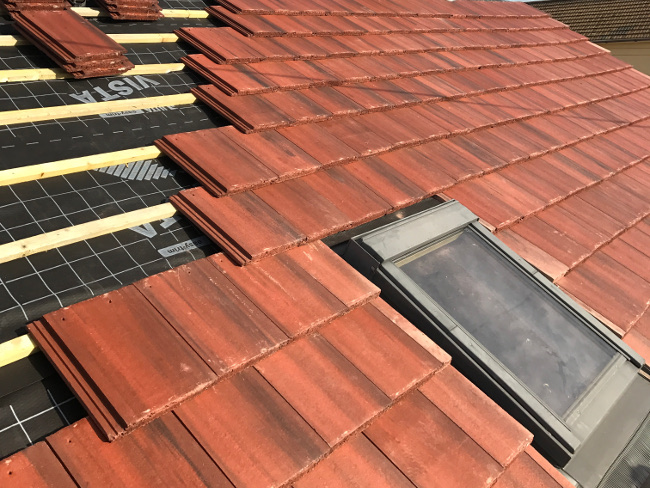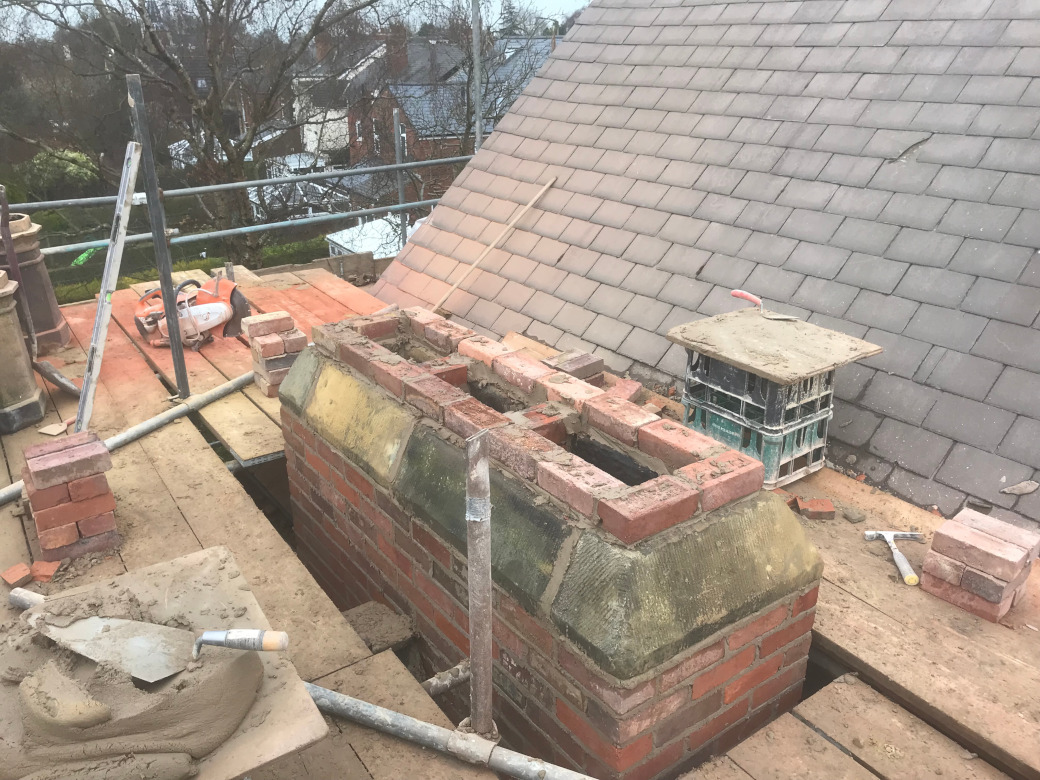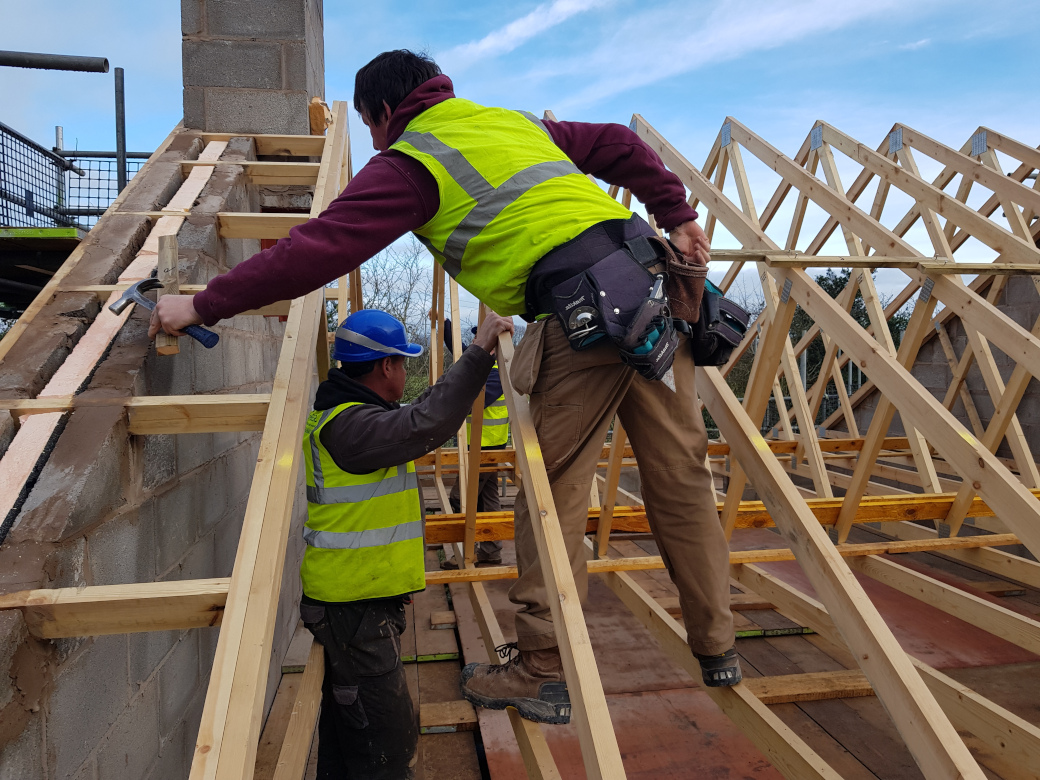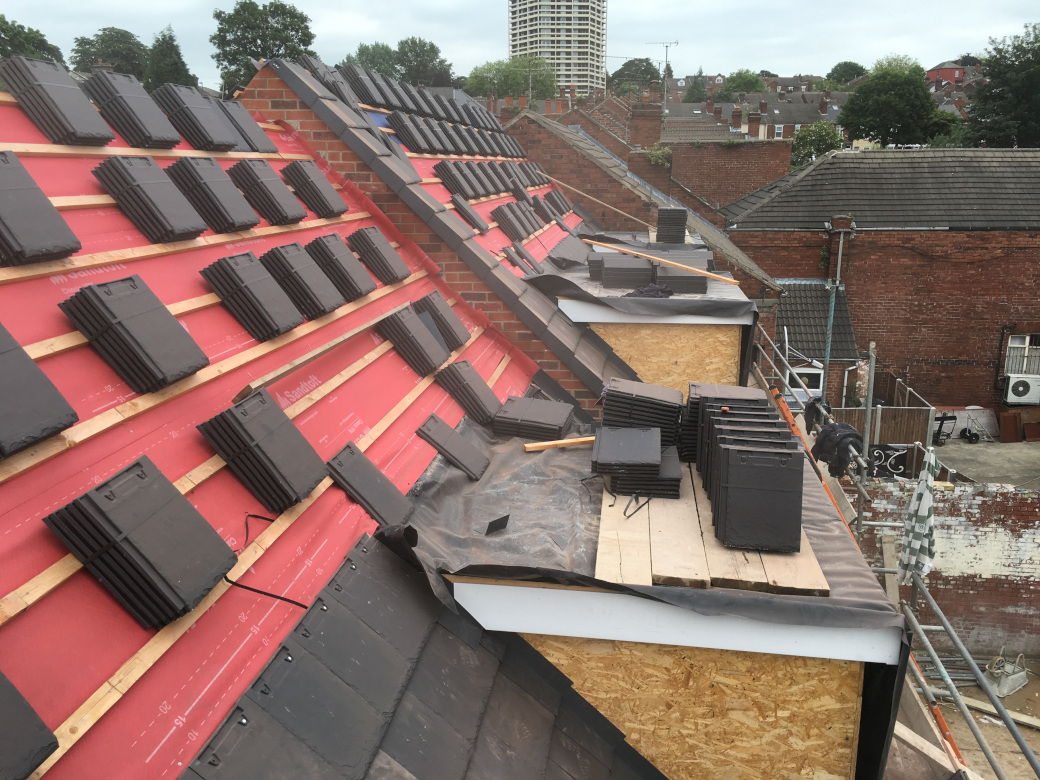CHEADLE Roof Repairs
T: 07398 522771
PITCHED ROOFS
Our operatives are fully trained in all aspects of pitched roof work.
We repair and replace both slate and tile roofs. Slate is available as both natural slate or composite. Likewise roof tiles are available in clay or concrete composite materials.
We use only top quality building materials that comply with British Standards or Agrement Certification where applicable.
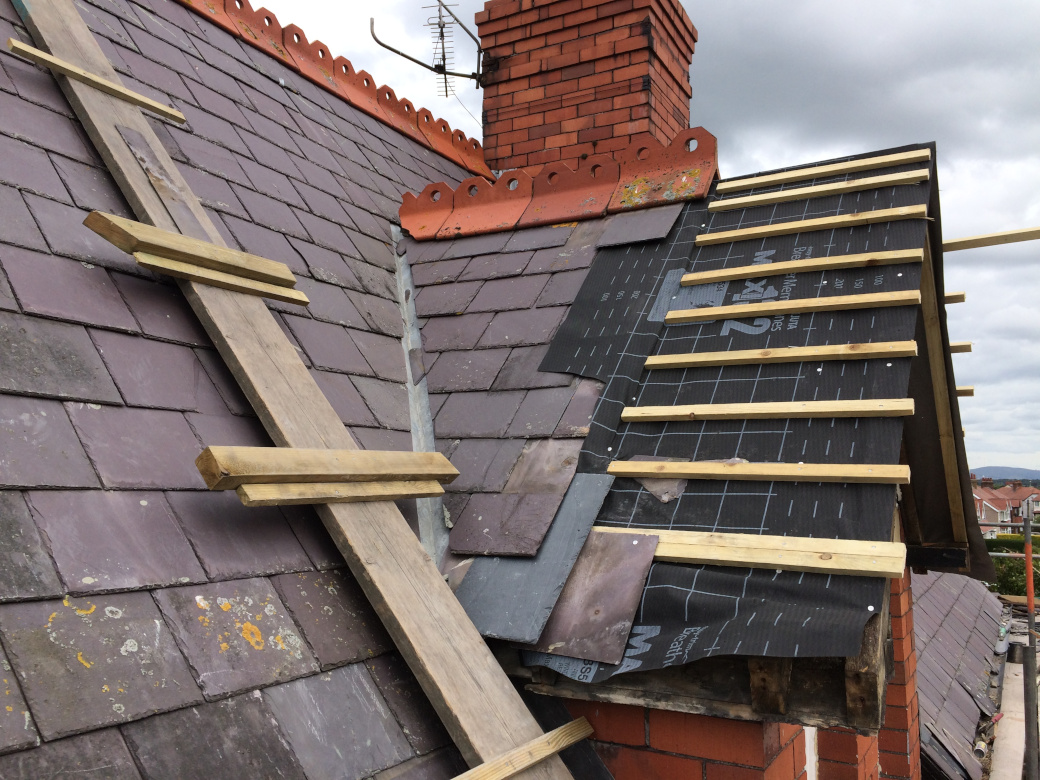
Roof replacement
Your roofing contractor must have a firm understanding of all the factors involved: roof loading, structural integrity, material suitability, construction standards.
Tiles are heavier than slates and the method of fixing is different, so your roofing contractor needs to know his trade.
Both clay and concrete tiles are available either as flat tiles or profiled.
If you suspect you have a roof problem call us in at the outset for unbiased and professional advice concerning the best materials to use and the right way to go about the work. We are always happy to advise without any commitment on your part to purchase. Better safe than sorry.
FLAT ROOFS
Repair and replacement of flat roofs
Flat roofs are more economical to construct but do require servicing every 15 - 20 years. Providing some maintenance is carried out, such as cleaning and repairs to any damage to the roof covering, modern roof coverings will have a long life.
As well as the degradation of the top surface, older flat roofs can suffer from structural defects caused by a combination of rain water penetration and/or interstial condensation.
When having a flat roof repaired you may wish to take the opportunity to have new thermal insulation added.
Many older roofs have little or no adequate heat insulation. Having proper insulation fitted will help keep your heating bills down and keep the roof warmer.
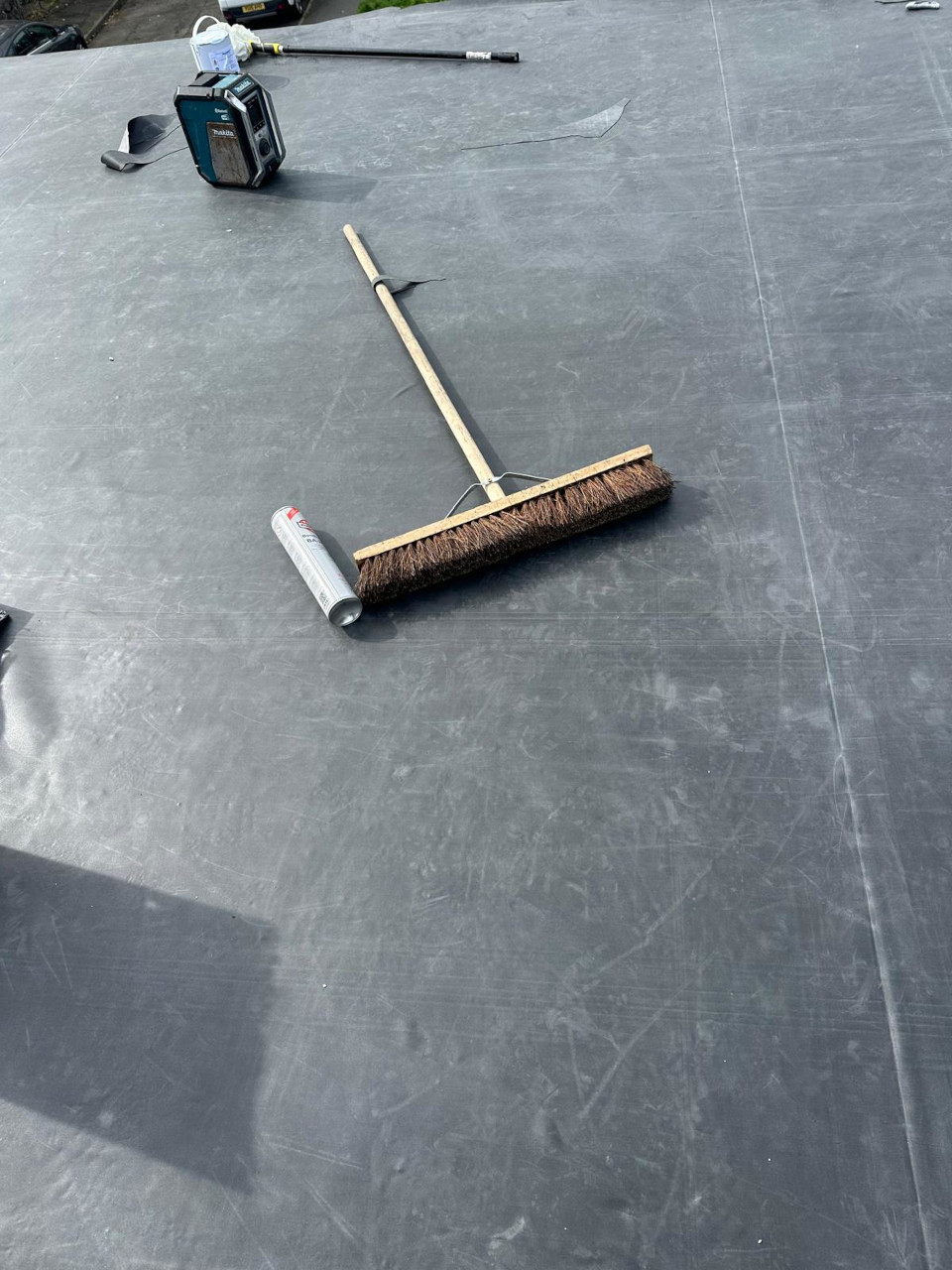
Flat roofs are more economical to construct but do require servicing every 15 - 20 years. Providing some maintenance is carried out, such as cleaning and repairs to any damage to the roof covering, modern roof coverings will have a long life.
If small areas of damage are not promptly fixed it may be nessary to replace the entire roof deck and maybe even the thermal insulation and joists.
The preferred flat roof surfacing is now EPDM rubber. It has a proven long life and, in many cases, a single sheet will cover the roof without any joints. Where the flat roof abuts a pitched roof it is necessary to remove one or two rows of tiles or slates in order to lap the EPDM sheet under the existing roofing felt.
Whether the roof covering is EPDM rubber or torch-on felt adhesion to the decking is of paramount importance. Therefore, with any repair, after stripping the damaged roof covering, it may be necessary to over-board with new, clean OSB boarding to ensure good bonding is obtained.
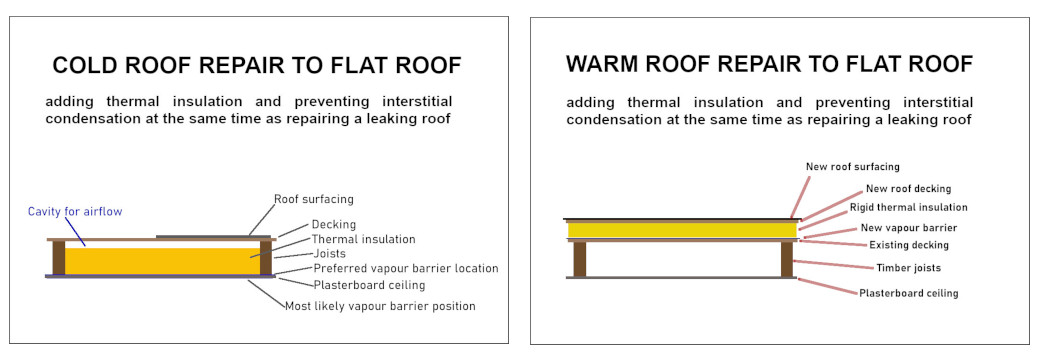
Flat roofs are often installed on kitchen or bathroom extensions, rooms in which high levels of moisture are generated. Adequate ventilation both in the room and to the roofspace is important. The type of roof ventilation and exact positioning of vapour barriers will depend on whether the roof is a "cold roof" or a "warm roof". Most flat roofs should be considered as being the "cold roof" type.

